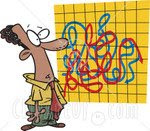 Dr. Housing Bubble featured an interesting viewpoint in “Federal Reserve and U.S. Treasury Don’t Like you, Nothing Personal:”
Dr. Housing Bubble featured an interesting viewpoint in “Federal Reserve and U.S. Treasury Don’t Like you, Nothing Personal:”
In the investing world you learn to expect the unexpected. I think most of us can put our pride aside and realize that we are living in a very different financial world, one that has not been seen in over a generation. In these gut wrenching times, you might as well spend your money on going to Magic Mountain instead of playing the stock market. So many investing philosophies are being turned on their head. Does dollar cost averaging still make sense? Is having your money in the S & P 500 really mean you’re diversified? Is real estate the safest investment? I think these questions are making many over the counter top finance books seem obsolete.
I hate to break it to you but the Federal Reserve and U.S. Treasury really don’t like you. They view most Americans as hamsters that serve only one purpose, to shop and consume. You will never hear them trying to push an agenda that would encourage Americans to be savers or manage their money wisely. How can they? They don’t do it so for them to say this would be hypocritical. In fact, their policy actions including dropping rates to near zero put us in a perilous situation that now is looking more and more like Japan’s lost decade. We have Ben Bernanke saying this to an audience in London:
“In my view … fiscal actions are unlikely to promote a lasting recovery unless they are accompanied by strong measures to further stabilize and strengthen the financial system,” Bernanke said.”
This guy. He has already taken on over $2 trillion onto the books of the Federal Reserve with questionable assets and he is still asking for more. These are the actions of a monetary policy ideologue. He is going to have a tough time admitting that monetary policy is simply not helping anyone aside from his masters in the crony capitalist regime. The banks have done so well, that we even have Citi and Morgan Stanley merging brokerages. While people are being laid off left and right, we have a $2.7 billion deal going down. And make no mistake, Morgan Stanley is only doing this because the Fed and other government institutions are back stopping $306 billion in toxic assets. Bernanke then gives us another nugget of wisdom:
“Financial markets remain frozen partly because a “large quantity of troubled, hard-to-value assets” is still on institutions’ balance sheets, Bernanke said.
There are several ways to solve this problem, he said, all involving public funds.
The government could simply buy the troubled assets, or it could give asset guarantees and agree to absorb part of the prospective losses, he said.
“Yet another approach would be to set up and capitalize so-called ‘bad banks,’ which would purchase assets from financial institutions in exchange for cash and equity in the bad bank,” Bernanke said.”
Here we go with this stupid bad bank idea again. Keep in mind that Wall Street and banks have hidden the most insidious stuff and are only itching to load it off onto the American tax payer. The premise of the bad bank is such a stupid notion. You want to know a secret? We already have a bad bank. In fact, we have about 8,300 of them!
Propping up essentially insolvent banks will only waste money and postpone their inevitable demise. B of A has now requested (and is receiving) some additional $20 billion to complete their (stupid) acquisition of Merrill Lynch and to better digest their (even stupider) acquisition of Countrywide. Not only that, the U.S Treasury is providing them with a $100 billion “backstop,” to help swallow further anticipated losses.
This is how a previously sound bank has turned into a zombie corporation, whose stock price got absolutely hammered and is now trading around $7.
The business lesson learned is that if you are large enough you can be stupid and screw up big time; at least you will get bailed out. If you are a sharp and honest entrepreneur running a small business that is going through some difficult times, you’re on your own.







